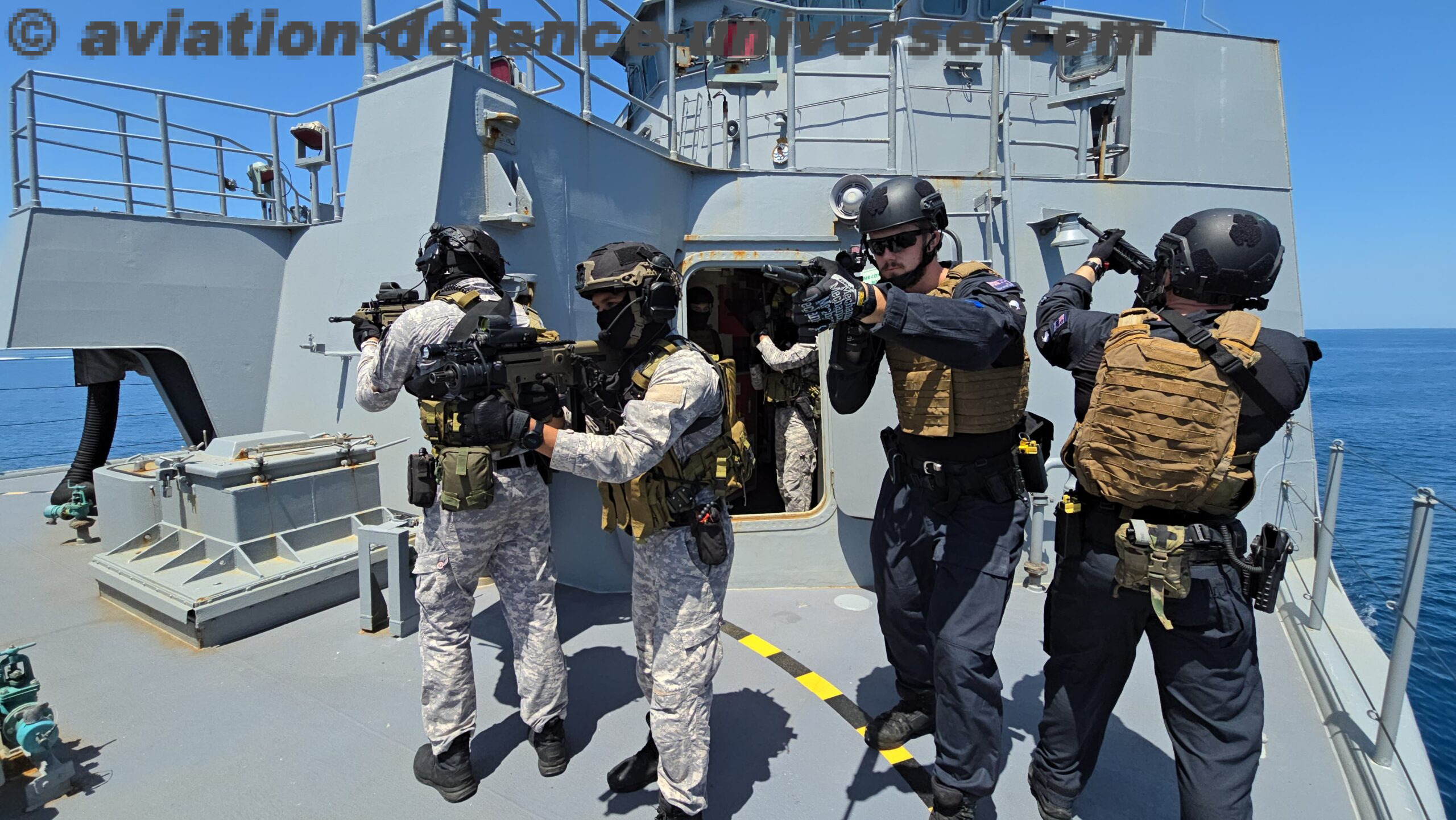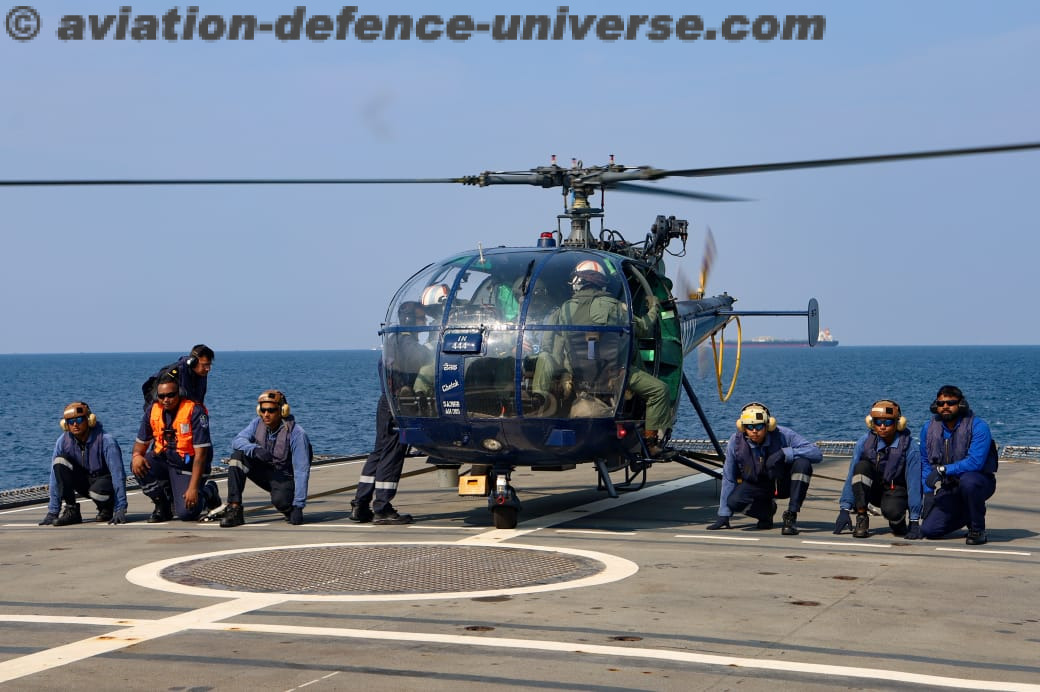![]()
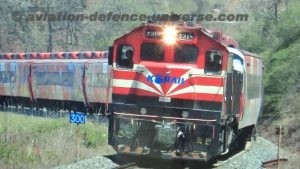
By Sangeeta Saxena
- 17th May 2007 a red letter day for Koreas both North & South
New Delhi. 17 May 2020. This day in 2007 created history not just for the two Koreas but for the world. It was 56 years since the division of Korea into North Korea and South Korea, when two trains one each from both the nations, crossed the heavily armed border on 17 May 2007, restoring train service severed in the 1950-1953 war.The trains carried 100 South Koreans and 50 North Koreans including a South Korean conductor from one of the last trains to cross before the rail link was cut in 1951.
In 2007, on the east coast of Korea, the first train crossed the DMZ on the new Donghae Bukbu (Tonghae Pukpu) Line. The new rail crossing was built adjacent to the road which took South Koreans to Mount Kumgang Tourist Region, a region of significant cultural importance for all Koreans. More than one million civilian visitors crossed the DMZ until the route was closed following the shooting of a 53-year-old South Korean tourist in July 2008. After a joint investigation was rebuffed by North Korea, the South Korean government suspended tours to the resort. Since then the resort and the Donghae Bukbu Line have effectively been closed by North Korea. Currently, the South Korean Korea Railroad Corporation (Korail) organizes tours to DMZ with special DMZ themed trains.[78]
On 14 October 2018, North and South Korea, agreed to meet the summit’s goal of restoring railway and road transportation which had been cut since the Korean War by either late November or early December 2018. Road and railway transportation along the DMZ was reconnected in November 2018.

The plan to reconnect the two Koreas with a railway, and adjacent road, was agreed in 2000. A ceremony on 18 September 2002 marked the beginning of construction and another was held on 13 June 2003 to mark its completion. It was the day before the third anniversary of the inter-Korean summit meeting, the first time a South Korean president has ever visited the North. Although the prime use of the railway is intended to be freight, it is also envisaged that it could be used to re-unite families who were separated in the north and south after the 1953 truce.
Reconnection of the Kyongi Line links Seoul (close to the DMZ) with Shinuiju on the Chinese border and the Donghae Line running north-south in the eastern coastal areas. It connects the 70 million people on the Korean peninsula to the Trans-China Railway and Trans-Siberian Railway, the latter creating a route for rail freight to Europe, crucial for South Korea’s export-driven economy. The Trans-Korea railway will reduce transport costs by about a third and cut transit times in half.
The scheme is supported by Russia, traditionally North Korea’s ally. Russia will benefit from the additional rail freight running over its lines. Under the 2000 agreement, the North pledged to reconnect a 15.3km (9.5 mile) section of the Kyungeui railway from Kaesong station to the DMZ in the north, and the South to build a 1.8km (1.1 miles) section in the DMZ. A two-lane road was built alongside the Kyungeui railway line, also opening in 2003.
Under the latest agreement, North and South Korea restored a 27.5km (17 mile) section of the Donghae line to link the North’s Onjong-ri in the first stage. In the South, Dorasan station is the last South Korean stop on the line and has been the focus of ceremonies.
The line between Onjong-ri and Jojin on the east coast was rebuilt as a single-track railway in the first phase. The boundary railway stations of the two sides will be built separately by the North and South in locations the Governments feel are convenient, outside the DMZ. South Korea chose Dorasan station for its boundary station. The line is built to allow heavy freight with diesel locomotive haulage.
The South supplied the first batch of equipment and materials for the project to the North which are needed to reconnect rail and road links in the North in the east and west coastal areas, through Wonsan and Haeju ports.
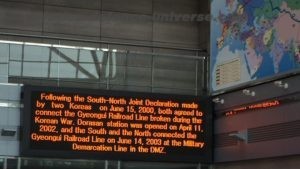 The main task was to clear hundreds of land mines to create a safe corridor for the road and railway. Both sides were engaged in this dangerous work. Work started on this task in September 2002. North Korea used older rolling stock, largely supplied by its ally Russia. South Korea’s equipment is more modern but both use coaches hauled by locomotives for long-distance services. It was expected that initially rolling stock and diesel locomotives will be jointly provided. In the longer term, new trains could be ordered. Initially, the single-track railway was being run as a self-contained operation between two border stations only, and had its own signalling and communications system.
The main task was to clear hundreds of land mines to create a safe corridor for the road and railway. Both sides were engaged in this dangerous work. Work started on this task in September 2002. North Korea used older rolling stock, largely supplied by its ally Russia. South Korea’s equipment is more modern but both use coaches hauled by locomotives for long-distance services. It was expected that initially rolling stock and diesel locomotives will be jointly provided. In the longer term, new trains could be ordered. Initially, the single-track railway was being run as a self-contained operation between two border stations only, and had its own signalling and communications system.
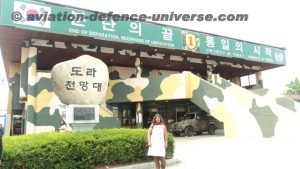 The railway crosses the border on the west coast and if relations between the two countries improve dramatically it could become very busy. The east coast branch provided the shortest route to key port of Wonsan, the Trans-Siberian Railway and Vladivostok. The west coast route is the most direct to reach the Trans-China railway.
The railway crosses the border on the west coast and if relations between the two countries improve dramatically it could become very busy. The east coast branch provided the shortest route to key port of Wonsan, the Trans-Siberian Railway and Vladivostok. The west coast route is the most direct to reach the Trans-China railway.
Ultimately it has been agreed that the road adjacent to the new railway will be rebuilt with four lanes. An industrial zone was planned to be built in the North at Kaesong, close to the DMZ. Ultimately the line could be doubled-tracked and upgraded to a high-speed route. Electrification, already used in South Korea, could be extended.
Technology content Courtesy : https://www.railway-technology.com/projects/north-south-korea/

































